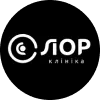The semantic core: without it, promotion “goes blind”
Collecting the semantic core is a key stage in an SEO strategy, without which website promotion becomes ineffective, and businesses lose opportunities to attract the target audience. Without carefully selected keywords, even the highest quality content, stylish design, and a technically advanced website run the risk of going unnoticed in search engines, leading to lower traffic and lost sales. Compiling a semantic core allows you to create a clear query structure that exactly matches users' search queries, ensuring high positions in search results and attracting potential customers. Collecting semantics forms the foundation for content strategies, page optimization and advertising campaigns aimed at increasing conversions.
Each query at the core reflects your audience's real needs and intentions, making it an indispensable business tool. Ordering a semantic core from Locomotive Digital is an investment in accurately meeting users' expectations and long-term website growth in search engines.
Collecting semantics: definition in simple words
The semantic core of a website is a structured set of keywords and phrases that describe the essence of your business, goods or services, as well as match the queries that users enter into Google. Collecting keywords helps the site become understandable to search engines, directing organic traffic to relevant pages and increasing their rankings.
How the right queries turn into sales
The selection of key queries allows you to transform casual visitors into loyal customers, because the words in the core accurately answer their questions, solve problems and motivate them to take actions, such as buying, registering or filling out a form. Collecting semantics ensures the creation of content that not only attracts the audience, but also encourages them to take specific steps, increasing conversions and business revenue.
Weak core symptoms: when is it time to reassemble everything
An outdated or incorrectly composed website core causes low promotion efficiency, leading to loss of traffic, lower conversions and unjustified advertising costs. Collecting a semantic core for a site is necessary if the site does not bring the expected number of leads, despite investments in marketing. It is worth ordering a semantic core collection in order to eliminate problems associated with irrelevant queries and return the site to the TOP of search results. Without relevant semantics, even high-quality design or active advertising campaigns will not be able to ensure sustainable growth.
Search queries are constantly changing under the influence of market trends, new products, and audience behavior. The selection of a semantic core adapts the site to current realities, making it competitive.
Lots of impressions, few clicks: low CTR
A high number of search engine impressions with a low CTR (percentage of clicks) indicates irrelevant key queries in the core that are not in line with users' intentions. Collecting queries for the semantic core helps replace inappropriate words with those that attract the target audience, increasing page clickability:
- Irrelevant queries — keywords do not reflect the real needs of users, which reduces their interest.
- Weak meta tags — incorrectly composed Title and Description do not motivate you to visit the site.
- High competition — using only high-frequency keywords reduces the chances of success for new sites.
Collecting semantics allows you to optimize search suggestions, making them more accurate. Collecting keywords improves engagement with search results, increasing conversions.
Pages cannibalize each other in search
When multiple pages on a site are optimized for the same or similar keywords, cannibalization occurs, which causes them to compete with each other in search engines, reducing overall rankings. Collecting and clustering the semantic core eliminates this problem by distributing requests across unique pages so that each of them works for a specific purpose.
The advertising budget is growing, but there are no more leads
If Google Ads campaigns use a significant budget but the number of leads remains low, this indicates that the keywords in the core do not meet the real needs of the audience. Ordering a semantic core for a website means optimizing advertising campaigns, reducing the cost per click and increasing their effectiveness.
Collecting a semantic core: tools — why do we need several services at once
Collecting a semantic core requires the use of specialized tools that allow in-depth analysis of key requests, competitors' behavior and market trends. Each service performs a unique task, ensuring the completeness and accuracy of the collected semantics, which makes the process more efficient. Compiling the semantic core of the site using professional platforms speeds up work and improves the quality of the result, allowing you to cover all aspects of search queries. At Locomotive Digital, we use proven tools to ensure accuracy and maximum return on semantics collection.
Keyword Manager helps you structure and manage keywords. Ordering a semantic core from us means getting a professionally assembled core ready for use in SEO and advertising.
Serpstat, Ahrefs, Google Planner — who's responsible for what
Serpstat analyzes search suggestions and competitors' positions, Ahrefs provides data on link profile and traffic potential, and Google Keyword Planner estimates keyword frequency and forecasts budget for Google Ads. Collecting a semantic core for an online store requires a combination of these tools to cover a wide range of queries and create a competitive core:
- Serpstat — identifies competitors' keywords, their positions and frequency in search results.
- Ahrefs — analyzes traffic, link profile, and the potential of new keywords for growth.
- Google Planner — assesses the frequency of key queries and helps plan advertising campaigns.
Collecting semantics using these tools provides accurate and relevant data. The selection of key queries is based on analytics rather than assumptions, which guarantees success.
ML algorithms for automatic grouping
Modern ML algorithms automatically cluster key queries, grouping them into topics and pages, which significantly saves time and improves the accuracy of word distribution. This allows you to create a logical structure of the semantic core of the site, ready for use in SEO and advertising.
Order a semantic core collection: what do you get as a result
Ordering a semantic core collection from Locomotive Digital is a step towards creating a powerful tool that will increase organic traffic, increase conversions and optimize advertising campaigns. The semantics collection results provide a clear structure that works to achieve your business goals, whether it's increasing traffic or increasing sales. Collecting the semantic core provides a ready-made plan for content strategy and Google Ads customization, ensuring maximum return on investment. You won't just get data, but a tool that will take your site to the next level.
The core of the site becomes the basis for sustainable growth in search engines. Ordering a semantic core collection is a solution for those who strive to lead in search results.
Excel cluster table with frequencies and priorities
You will receive a detailed Excel table with keywords grouped into clusters, showing their frequency (high-, medium- and low-frequency queries) and priority for each page on the site. Collecting a semantic core for a site provides a ready-made plan for optimizing content, meta tags and structure, which simplifies further work.
Content GAP report: where your competitors are overtaking you
The Content GAP report identifies search queries that competitors use but are not in your core, allowing you to supplement the semantic core of the site and strengthen your position in search engines. This makes it possible to beat competitors, capturing their audience and increasing organic traffic.
Collecting semantics opens up hidden opportunities for growth. The selection of key queries from Locomotive Digital enhances your competitive advantages and brings the site to the TOP.












































